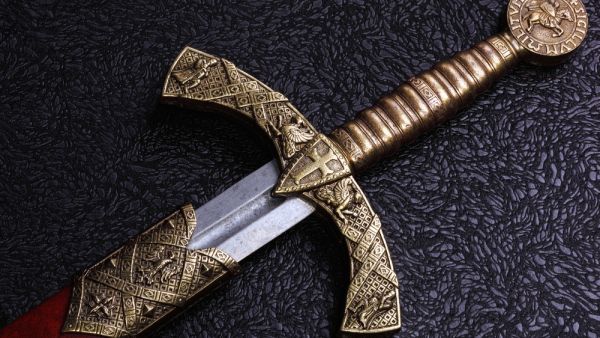Ali al-Attar was a senior commander in Granada's royal army. In his 90's, he fought with the army of King Abu Abdullah II and passed away in 1483 AD. During the battle, his enemies seized his sword, belonging to the Beni Nasr family that ruled Granada at the time. Recently, researchers from the University of Valencia and a Spanish company in Toledo conducted a study to document the sword and make it available to the public online.
Attar, who served as the commander of the Loja prison and the mayor of Zagra, was a Muslim warlord who served King Abu Abdullah, the last Sultan of Granada, and the father of his spouse Marima. In April 1483, with the help of his father-in-law, Attar tried to capture the Christian city of Cordoba but they lost the war. The king fell captive, while Attar was killed at the age of 90.
Attar had an amazing gold-plated sword adorned with ivory and precious stones. Initially, the sword had been considered a Christian possession, then, after historical negotiations, it has become an Andalusian treasure and is currently exhibited in the Military Museum of Toledo.
To document the valuable piece and make it available to the public, a team of researchers at the Polytechnic University of Valencia in cooperation with the company Ingheritag3D, made a three-dimensional scan of the sword that was published in a study of the Journal of Archeological Review.
The researchers took pictures of the sword from several angles using the "scanning" technique and then merged the images to come out in the end with a three-dimensional accurate scan.
"This technology allows the documentation of measurements and dimensions of precious pieces whether inside or outside museums, to facilitate their examination by specialists and the interested public online," said one of the researchers.
An Internet user can use the mouse to scan the online version of the sword created by the Berber tribe of Zenata and owned by the Bani Nasr family. Attar's sword is characterized by his ivory round handle, which includes Arabic letters and inscriptions, and features a golden part topped with handwritten expressions.
To document the details of this adorned antiquity, the researchers devised solutions that facilitated the analysis of high-value pieces, and could be used to document many artifacts exhibited in museums.
Prof. José Luis Lerma, at the University of Valencia, said "the traditionally written documentation of the valuable cultural heritage is no longer sufficient after the emergence of digital documentation in different forms. The digital documentation consisting of accurately recording antiquities' dimensions before offering it to the public facilitates the searching and checking process."
This article has been adapted from its original source.








